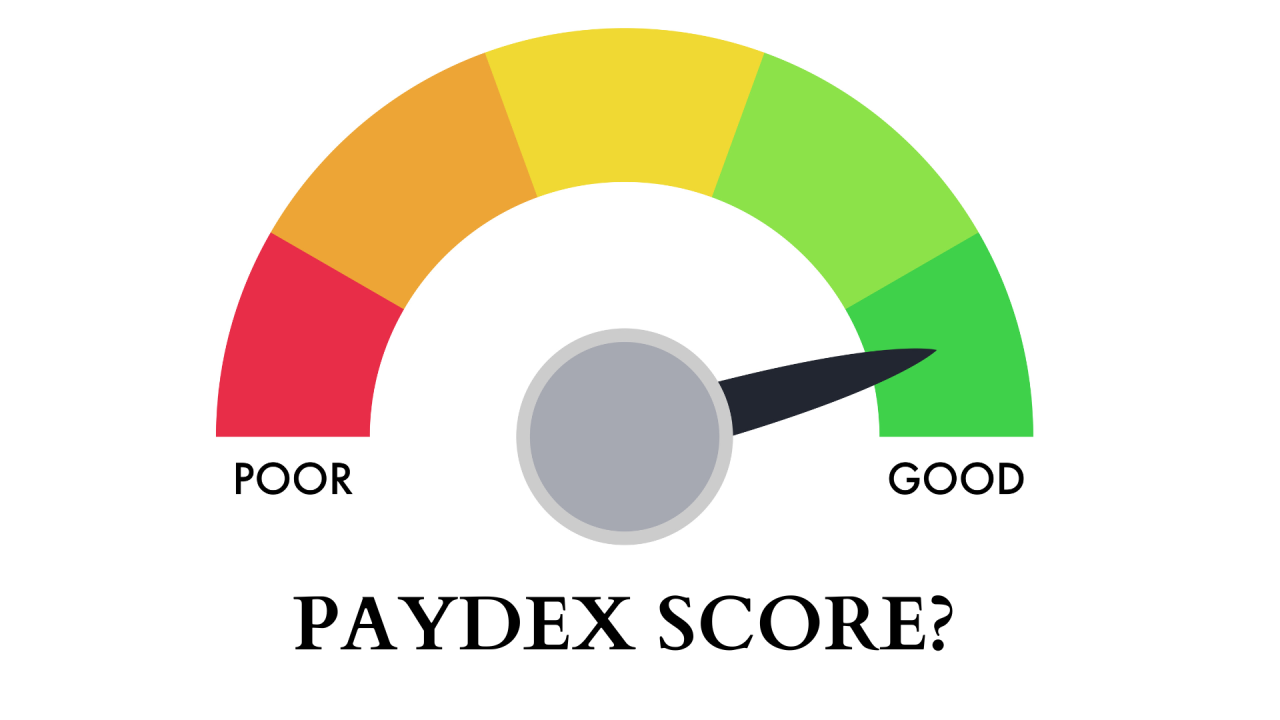When establishing business credibility, a PAYDEX® score is one of the most critical metrics to monitor. This score, issued by Dun & Bradstreet, provides a clear snapshot of how reliably a company meets its financial obligations.
As a trust signal for vendors, suppliers, and financial institutions, the PAYDEX score can open doors to better credit terms, stronger partnerships, and increased growth opportunities.
What is a PAYDEX score?
A PAYDEX® score is a business credit rating issued by Dun & Bradstreet (D&B) that evaluates a company’s payment history with suppliers and vendors. This score helps creditors, vendors, and other stakeholders assess the reliability of a business in meeting its financial obligations.
What factors impact your Paydex score?
Payment Timeliness
The primary determinant is how promptly your business pays its bills. Early payments or payments made on time will boost your score, while late payments will lower it.
Example: Paying invoices 10 days before the due date positively impacts your score.
Payment Terms
The terms agreed upon with suppliers and vendors also matter. If your agreement specifies 30 days and payments are made within this timeframe, it positively contributes to the score.
Reported Payment Experiences
Only payment data reported by vendors and suppliers to Dun & Bradstreet is considered. The more payment experiences reported, the more comprehensive your score. Businesses with limited trade credit activity may have lower scores or insufficient data.
Amount of Credit Used
Larger transaction amounts reported by vendors may weigh more heavily in your score calculation compared to smaller amounts. A history of managing higher credit limits responsibly signals stronger creditworthiness.
Payment Consistency
A consistent history of on-time payments is crucial. Sporadic late payments or erratic patterns can reduce your score, even if most payments are timely.
Industry-Specific Reporting
Some industries tend to report payments more actively to D&B, which may impact the data available to calculate your score. Working with vendors who report payments can help.
Credit File Updates
D&B updates scores regularly based on new data. Delays in reporting or inaccurate records may temporarily impact your score.
How is a PAYDEX score used?
A PAYDEX score is used by vendors, suppliers, lenders, and other stakeholders to evaluate a company’s financial reliability and payment behavior. It helps determine whether a business pays its bills on time, influencing decisions about extending trade credit, setting payment terms, and establishing credit limits.
A high PAYDEX score often leads to more favorable terms, such as longer repayment periods or larger credit limits, while a low score may signal financial risk and result in stricter terms or denied credit.
Lenders also use the score in loan approval processes, with a strong score improving the likelihood of approval and potentially lowering interest rates. Businesses use PAYDEX scores to assess the creditworthiness of potential partners, ensuring financial stability and reliability in business relationships.
How is a PAYDEX score calculated?
A PAYDEX score is calculated by Dun & Bradstreet (D&B) based on a company’s payment history with its suppliers and creditors. The score ranges from 0 to 100, with higher scores indicating better payment performance.
The primary factor in the calculation is the timeliness of payments relative to the agreed payment terms. For example, payments made 30 days before the due date contribute to a higher score, while those made late reduce it. D&B relies on payment data reported by vendors and suppliers, including the amount paid, the terms agreed upon, and whether payments were early, on time, or late.
Consistency and the volume of reported payment experiences also impact the score, with a broader data set providing a more accurate reflection of the company’s payment behavior. Transactions involving larger credit amounts may carry more weight in the calculation, further influencing the final score.
What do different Paydex scores mean?
Score Range: It ranges from 0 to 100, with higher scores reflecting better payment performance.
-
- 80–100: Payments made on time or early.
- 50–79: Payments are typically late by up to 30 days.
- 0–49: Payments significantly late, often exceeding 60 days.
What is a good PAYDEX score?
A good PAYDEX score is generally considered to be 80 or higher, indicating that a business consistently pays its bills on time or earlier than the agreed terms.
How to check your PAYDEX score
To check your PAYDEX score, you need to access your business credit report from Dun & Bradstreet (D&B). Here are the steps:
- Obtain a D-U-N-S® Number: Ensure your business has a D-U-N-S Number, which is required to create a D&B credit file. You can register for one on the D&B website if you don’t already have it.
- Create a D&B Account: Sign up for a Dun & Bradstreet account. Some services are free, while others, like detailed credit reports or ongoing monitoring, may require a paid subscription.
- Purchase a Credit Report: Once your D&B account is active, you can purchase a business credit report that includes your PAYDEX score. Some subscription plans provide ongoing access to updates and insights.
- Use Credit Monitoring Services: If you opt for a monitoring service from D&B, you can regularly track your PAYDEX score and other credit metrics to stay informed about changes.
- Check With Third-Party Platforms: Some third-party credit services partnered with D&B may provide access to your PAYDEX score, often as part of broader business credit monitoring tools.
How Can I Check Another Business’s PAYDEX Score?
To check another business’s PAYDEX score, you need to access their business credit report through Dun & Bradstreet (D&B). Follow these steps:
- Search the D&B Database: Visit the Dun & Bradstreet website and use their business lookup tool to find the company in question. You’ll need the business name, location, or D-U-N-S® Number.
- Purchase a Credit Report: Select the appropriate credit report for the company. D&B offers various report types, such as the CreditBuilder®, Business Information Report, or comprehensive monitoring packages. These reports include the PAYDEX score and other credit details.
- Use D&B Credit Services: If you have an account or subscription with D&B, you may already have access to credit reports for other businesses. Some plans allow ongoing monitoring of multiple companies.
- Verify Authorization: In some cases, you may need permission from the business to access detailed credit data, depending on your relationship with them and applicable regulations.
- Explore Third-Party Platforms: Certain third-party credit services partnered with D&B may provide access to PAYDEX scores and related information as part of broader business credit insights.
How to improve your PAYDEX score
Improving your PAYDEX score requires consistent, timely payments and proactive credit management. Here’s how to boost your score:
- Pay Bills Early or On Time: Ensure all invoices are paid on or before their due dates. Early payments (ahead of terms) contribute significantly to higher scores.
- Work With Vendors Who Report to D&B: Choose suppliers and creditors that actively report payment data to Dun & Bradstreet. Payments to non-reporting vendors won’t impact your score.
- Diversify Payment Experiences: Build relationships with multiple vendors to expand the number of trade references in your credit file. A variety of payment records makes your score more robust.
- Monitor Your Credit File Regularly: Check your D&B credit report for accuracy. Dispute any errors or outdated information, such as incorrect payment histories or missing data.
- Manage Credit Responsibly: Avoid overextending your credit and maintain a healthy balance with vendors. Consistently meeting credit obligations builds a strong financial reputation.
- Pay Larger Invoices Promptly: Since larger transactions may carry more weight in calculating your PAYDEX score, prioritize paying high-value invoices on time.
- Communicate With Vendors: If cash flow issues arise, negotiate terms with vendors to avoid payment delays. Establishing clear agreements can protect your credit standing.
FAQ
Can I get a loan without a PAYDEX score?
Yes, you can get a loan without a PAYDEX score. Still, lenders may rely on other factors like personal credit scores, financial statements, collateral, or business revenue to assess creditworthiness and approve the loan.
How long does it take to establish a PAYDEX score?
Establishing a PAYDEX score typically takes 3 to 6 months after vendors begin reporting payment data to Dun & Bradstreet, provided there are sufficient trade references and consistent payment history.

